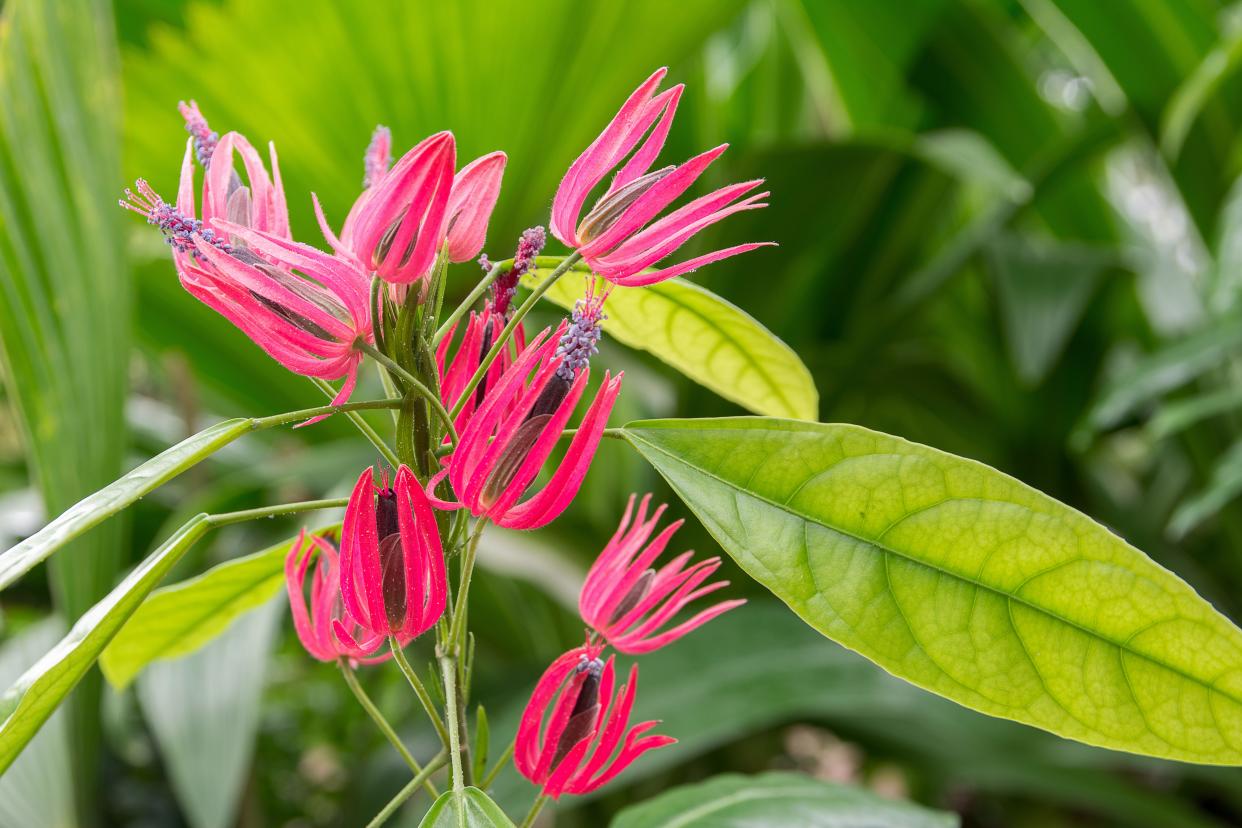Brazilian candles an ever-blooming houseplant

About 180 herbaceous and woody species of Pavonia grow wild throughout tropical and warm-temperate regions, though few of these Hibiscus relatives are widely cultivated. One, P. bahamiensis, with a range that includes South Florida, is popular there because its small flowers attract butterflies and hummingbirds. The other exception is P. multiflora, commonly called Brazilian candles. Not only is it grown in South Florida landscapes: its suitability as an indoor flowering plant is earning Brazilian candles fans around the world.
Six to 8 feet tall outdoors, this woody, upright-growing shrub can, if not pruned, match that height indoors. Its actual flowers are thin and purple, but they’re surrounded by distinctive, pinkish-red bracts that enclose the flowers before spreading to create a basket-like structure. Blossoms appear in clusters and develop over a period of days, rather than all at once. Indoors, in bright or bright-indirect light, Brazilian candles often flower year-round. Use a good grade of potting soil, and fertilize as directed with Osmocote Plus or a soluble product. Propagate with cuttings. Plants are available online.
CLEANSING HOUSEPLANT SOIL
A chore that can refresh tired-looking houseplants, especially specimens that have been in the same container for years, is flushing impurities such as fertilizer salts and airborne toxins out of their soil. The smaller the plant and its container, the easier the process, which consists simply of repeatedly running fresh water gently through the soil. This practice benefits all potted plants, from ivy to cactus.
WORLD'S LARGEST AND SMALLEST EGGPLANTS
Not only is the Aswad eggplant nearly black: it’s among the world’s largest. Often bearing fruit weighing more than 3 pounds each, this variety from Iraq is extremely sweet. And since it has a squat, rounded shape, Aswad is esteemed for baking and grilling. In contrast, the light-purple Thai Lavender Frog Egg is a truly tiny eggplant that resembles an inch-wide ping-pong ball. This variety is as decorative as it is tasty when used whole in stir-fries and curry dishes. Seeds of these remarkable eggplants are available at www.RareSeeds.com. Seeds can be sown January through March, and again in August and September.
FLORIDA NEEDS THIS TREE
A fine plant that’s been largely ignored by our nursery industry is the Nile trumpet tree (Markhamia lutea). Displaying clusters of golden-yellow blossoms intermittently throughout the year, this cold-hardy East African evergreen species grows rapidly up to 20 feet tall, though it can double that height in the wild. Nile trumpet has medium-green, heavily textured, pinnate foliage that provides a nice backdrop for its flowers. A similar tree in California — where it’s widely cultivated — has slightly different blossoms. The sole drawback with this drought-tolerant plant is the wait time between seed-sowing and flowering — up to 10 years. Seeds are often available online.
This article originally appeared on The Ledger: Plant earning fans around the world

